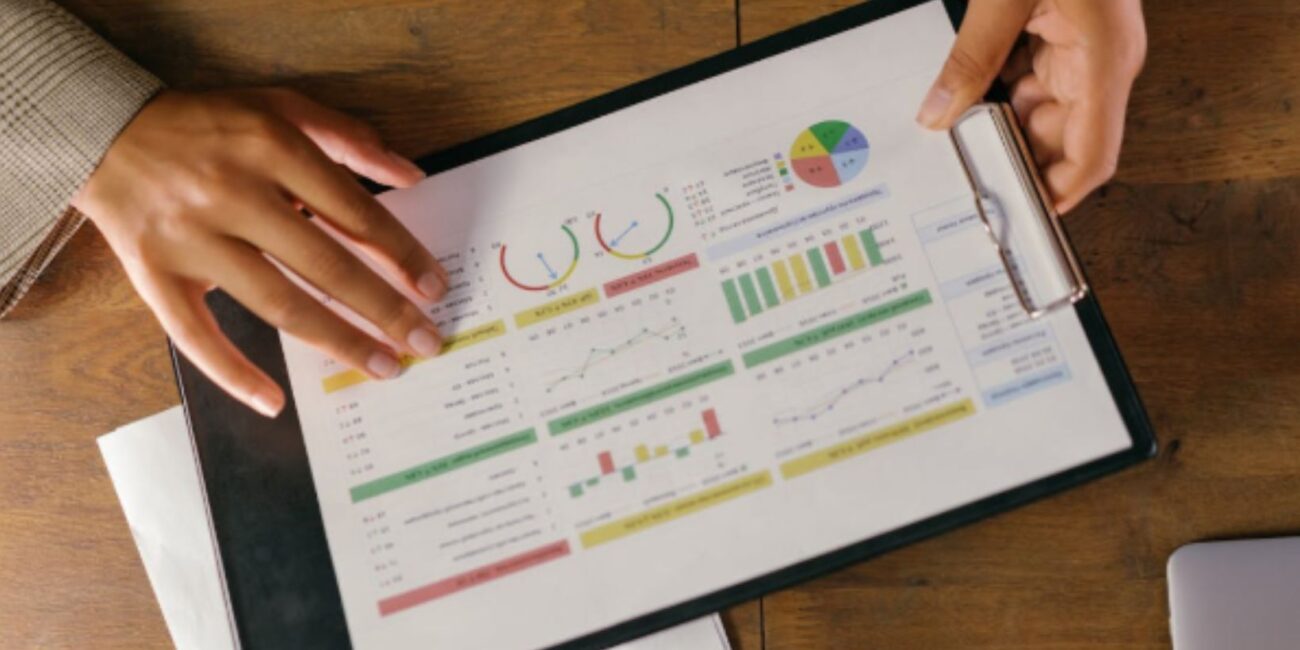Do you want to maximize the value of your business assets?
Double declining balance depreciation stands as one of the strongest yet least used accounting techniques which delivers significant improvements to your financial results. This accelerated depreciation method can help you:
- Reduce your tax burden faster.
- Match expenses with revenue more effectively
- The double declining balance depreciation method enables you to enhance cash flow during the initial years when you own an asset.
And that’s just the beginning.
This guide explains the operation of double declining balance depreciation and demonstrates both why it benefits your business strategy and how to apply it properly to maximize asset value.
What You’ll Discover:
- What Is Double Declining Balance Depreciation?
- How Double Declining Balance Depreciation Works
- When To Use Double Declining Balance Depreciation
- Calculating Double Declining Depreciation: Step-By-Step
- Tax Benefits And Limitations
What Is Double Declining Balance Depreciation?
Double declining balance depreciation (DDB) represents an accelerated depreciation strategy that allocates higher depreciation expenses during the initial years of an asset’s service life.
Straight-line depreciation distributes expenses evenly throughout an asset’s life, whereas DDB starts with higher expenses that decrease in subsequent years. This double declining depreciation method better matches how assets actually lose value in real-world scenarios.
As the Federal Reserve reported, the current-cost depreciation of fixed assets in the U.S. reached approximately $4.59 trillion as of January 2023, marking a record-high level of depreciation expense in the economy.
Selecting an appropriate depreciation method is a strategic business decision that affects your financial outcomes because enormous sums are involved.
- Tax liability
- Financial statements
- Cash flow
- Asset replacement planning
How Double Declining Balance Depreciation Works
The double declining balance method calculates depreciation by taking twice the straight-line rate and applying it to the remaining book value of the asset.
In the initial years, you will deduct larger portions of the asset’s value, while subsequent deductions will decrease over time.
Here’s what makes it unique:
- Front-loaded deductions: The early ownership period of your asset brings you significant tax deductions.
- Declining balance: The depreciation amount decreases each year
- No salvage value initially: The depreciation process ignores salvage value calculations until the asset reaches its final year.
- Switch-over option: Numerous companies choose to adopt straight-line depreciation when it proves beneficial.

This method accurately reflects the common real-world pattern of asset depreciation. A brand-new vehicle or computer, along with new machinery, usually depreciates more during its first year than it does during its fifth year.
The BEA’s publication presents fixed asset data from various industries demonstrating both the temporal variation in asset values and national depreciation trends.
When To Use Double Declining Balance Depreciation
Not all assets or business situations are suitable for double declining balance depreciation. In specific business situations, this method provides a significant advantage to your profits.
DDB depreciation works best when:
- Assets depreciate rapidly during their initial years of operation when using technology, vehicles, and equipment designed to become obsolete swiftly.
- Double declining balance depreciation allows you to reduce taxable income during high-earning years when you are in a high tax bracket but predict a decrease in income in future years.
- The increased cash flow from your growing business will support expansion efforts.
- When you acquire substantial new assets, you can optimize deductions during the early stages of major capital spending.
During the 2024 tax year, the IRS allows a special depreciation allowance of 60% to apply to specific qualified property that enters service after 2023, with a Section 179 expense deduction limit set at $1,220,000. The IRS tax provisions outlined in Publication 946 give businesses enhanced accelerated depreciation options that match the principles of double declining balance depreciation.
Calculating Double Declining Depreciation: Step-By-Step
Understanding the formula makes calculating double declining balance depreciation a straightforward process.
The depreciation expense calculation requires doubling the reciprocal of the useful life before multiplying it with the book value.
Now, we will examine this through a practical example.
The company acquires equipment worth $50,000, which will last for 5 years and have a residual value of $5,000.
Step 1: The straight-line depreciation rate is determined by dividing 1 by the asset’s useful life of 5 years, which results in 0.2 or 20%.
Step 2: Double that rate 2 × 20% = 40%
Step 3: Calculate the depreciation by multiplying the beginning book value by the rate.
Year 1: The depreciation calculation for Year 1 equals $20,000 after applying 40% to the $50,000 equipment cost.
Step 4: We need to prevent the book value from falling below the salvage value, which requires adjusting the final year’s depreciation to $1,480 since our standard calculation would yield $3,888, which is under the $5,000 salvage value.
Tax Benefits And Limitations
Maximizing Tax Benefits
Double declining balance depreciation offers substantial tax benefits, which are most advantageous during the initial years of owning the asset.

Here’s how to maximize those benefits:
Under Section 179, businesses can deduct up to $1,220,000 for qualifying equipment purchases in the tax year 2024. Use Section 179 deductions for certain assets and apply DDB to others to achieve the best tax outcome.
Purchasing assets close to the fiscal year-end allows for large tax deductions even if assets serve for brief periods, while planning major purchases during high-profit years maximizes deductions.
When you replace a component of an existing asset, you can take both a loss on the old component’s disposition and start depreciating the new component through DDB.
Important Limitations
DDB depreciation isn’t always the optimal strategy. Avoid using it when:
- Your business reveals insignificant profit margins or losses that result in wasted deduction opportunities.
- The asset demonstrates an extended usefulness duration, which results in reduced depreciation advantages.
- If you anticipate stronger profits in upcoming years, then using DDB depreciation can lead to missed tax deductions during low-tax periods.
- Companies prioritize their financial statement presentation over tax advantages that result in decreased early profits.
Common mistakes include failing to transition to straight-line depreciation when needed, incorrect useful life calculations, overlooking mid-year conventions, and neglecting to keep book and tax depreciation records separate.
The Bottom Line
Double declining balance depreciation serves as an effective financial strategy to enhance asset value and lower tax payments but may not fit all business scenarios.
Analyzing both your current and future tax positions while assessing your asset types and cash flow requirements combined with financial reporting needs will help you decide if DDB is suitable for your business.
The choice of depreciation strategy has become critical given that current-cost depreciation of fixed assets in the United States reached approximately $4.59 trillion by January 2023, according to Federal Reserve data.
Double declining balance depreciation enables businesses to match depreciation expenses with their assets’ real value reduction while optimizing tax positions and cash flow, which presents a beneficial strategy for business owners who want to maximize asset value.



